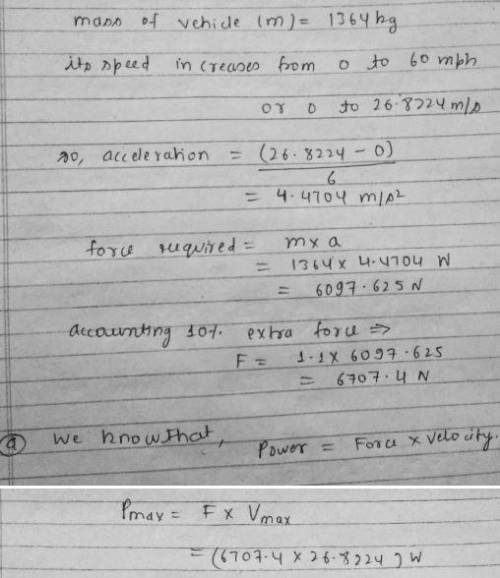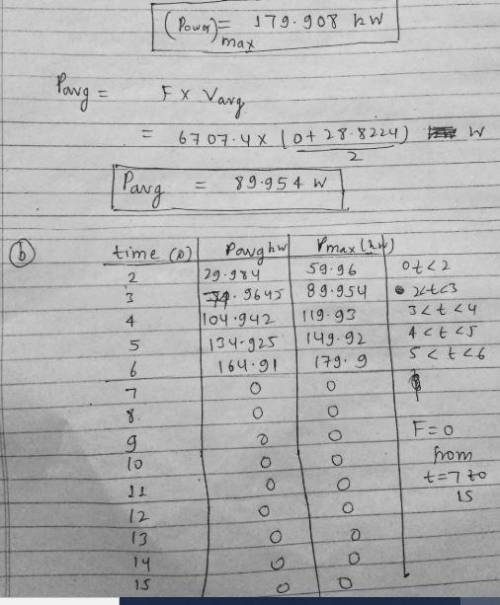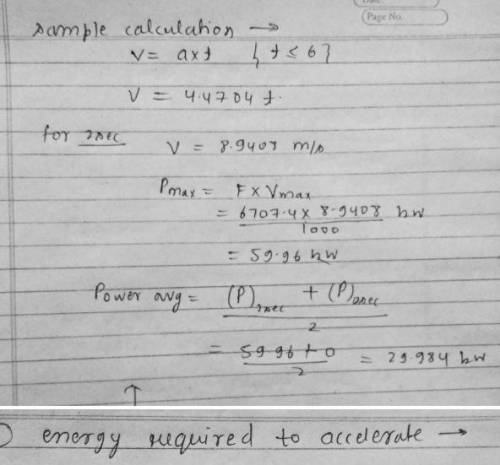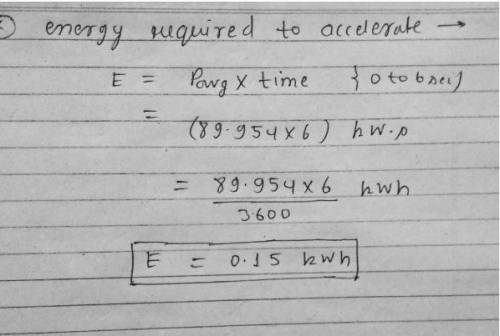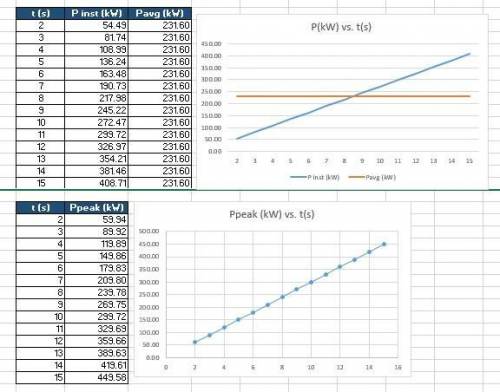
Engineering, 21.04.2020 04:17 greysonelmore1212
The vehicle motor or engine can be size based on required peak power. The energy or average power required provides a sense for how much fuel is required.
1. Calculate the average and peak power (kW) needed to accelerate a 1364 kg vehicle from 0 to 60 mph in 6 seconds. Assume that aerodynamic, rolling, and hill‐climbing force counts for an extra 10% of the needed acceleration force.
2. Chart the average and peak power (kW) vs. time duration from 2 to 15 seconds.
3. How much energy (kWh) is required to accelerate the vehicle?

Answers: 1


Other questions on the subject: Engineering

Engineering, 03.07.2019 14:10, BardiFan
Amass of m 1.5 kg of steam is contained in a closed rigid container. initially the pressure and temperature of the steam are: p 1.5 mpa and t 240°c (superheated state), respectively. then the temperature drops to t2= 100°c as the result of heat transfer to the surroundings. determine: a) quality of the steam at the end of the process, b) heat transfer with the surroundings. for: p1.5 mpa and t 240°c: enthalpy of superheated vapour is 2900 kj/kg, specific volume of superheated vapour is 0. 1483 m/kg, while for t 100°c: enthalpy of saturated liquid water is 419kj/kg, specific volume of saturated liquid water is 0.001043m/kg, enthalpy of saturated vapour is 2676 kj/kg, specific volume of saturated vapour is 1.672 m/kg and pressure is 0.1 mpa.
Answers: 3

Engineering, 04.07.2019 18:10, skpdancer1605
Ariver flows from north to south at 8 km/h. a boat is to cross this river from west to east at a speed of 20 km/h (speed of the boat with respect to the earth/ground). at what angle (in degrees) must the boat be pointed upstream such that it will proceed directly across the river (hint: find the speed of the boat with respect to water/river)? a 288 b. 21.8 c. 326 d. 30.2
Answers: 3

Engineering, 04.07.2019 18:10, Tyrant4life
Draw the engineering stress-strain curve for (a) bcc; (b) fcc metals and mark important points.
Answers: 1

Engineering, 04.07.2019 18:20, ashleyjaslin
Derive the correction factor formula for conical nozzle i=-(1+ cosa) and calculate the nozzle angle correction factor for a nozzle whose divergence hal-fangle is 13 (hint: assume that all the mass flow originates at the apex of the cone.
Answers: 3
You know the right answer?
The vehicle motor or engine can be size based on required peak power. The energy or average power re...
Questions in other subjects:





Mathematics, 02.07.2020 04:01



Computers and Technology, 02.07.2020 04:01


